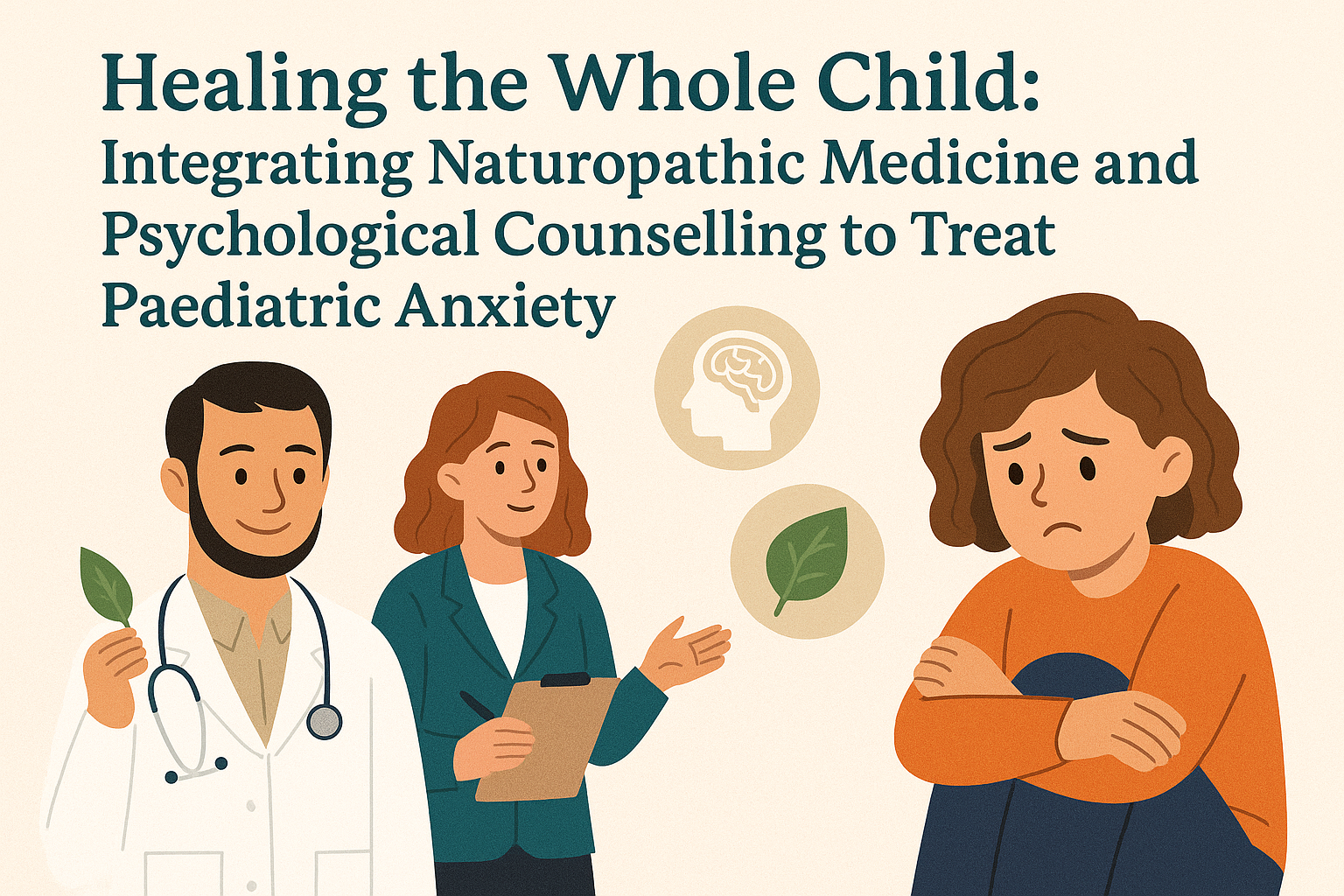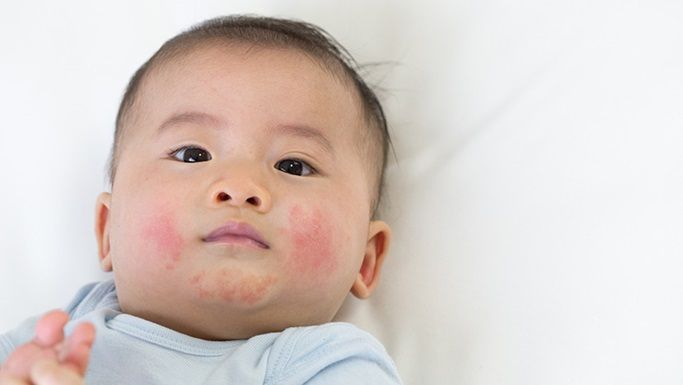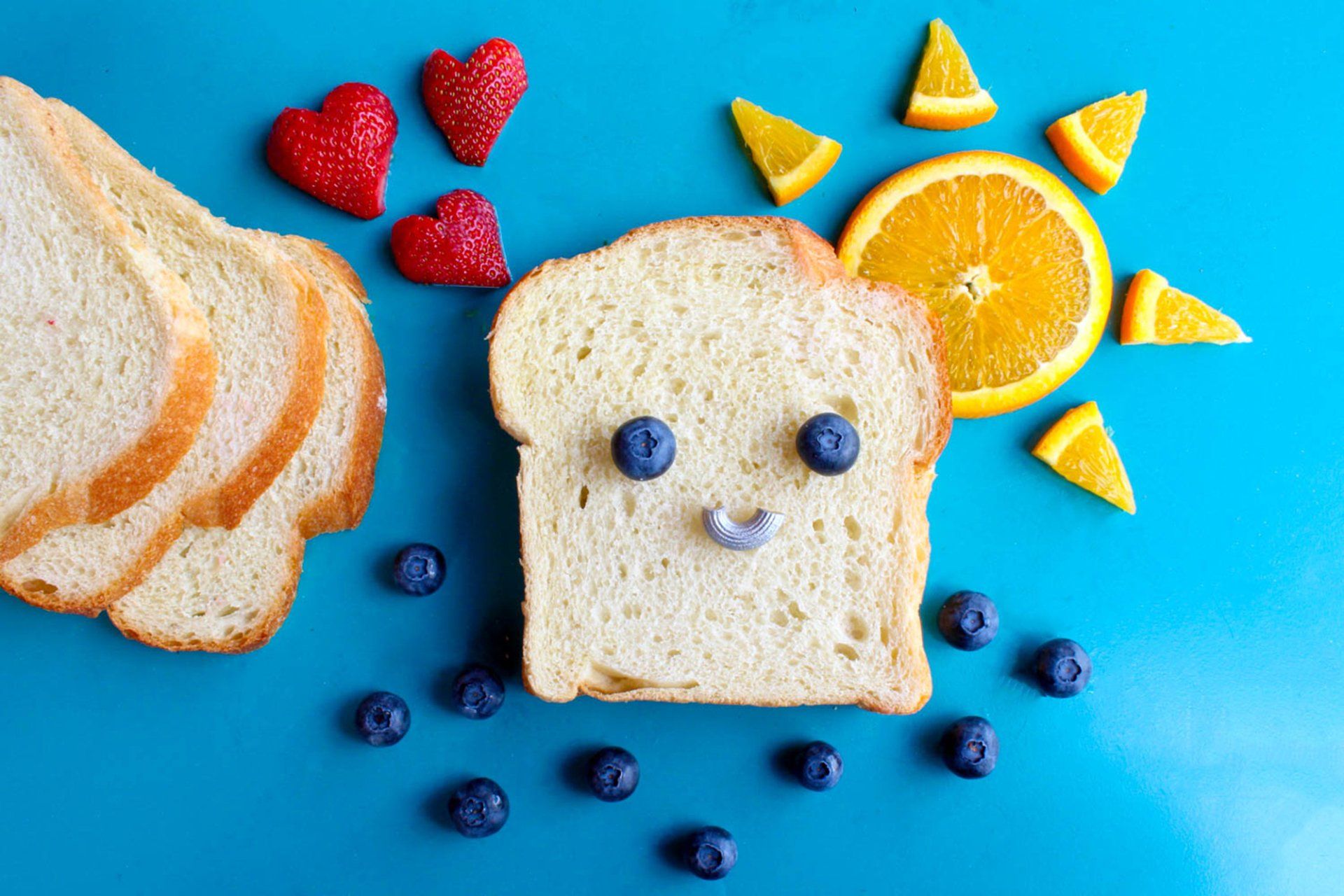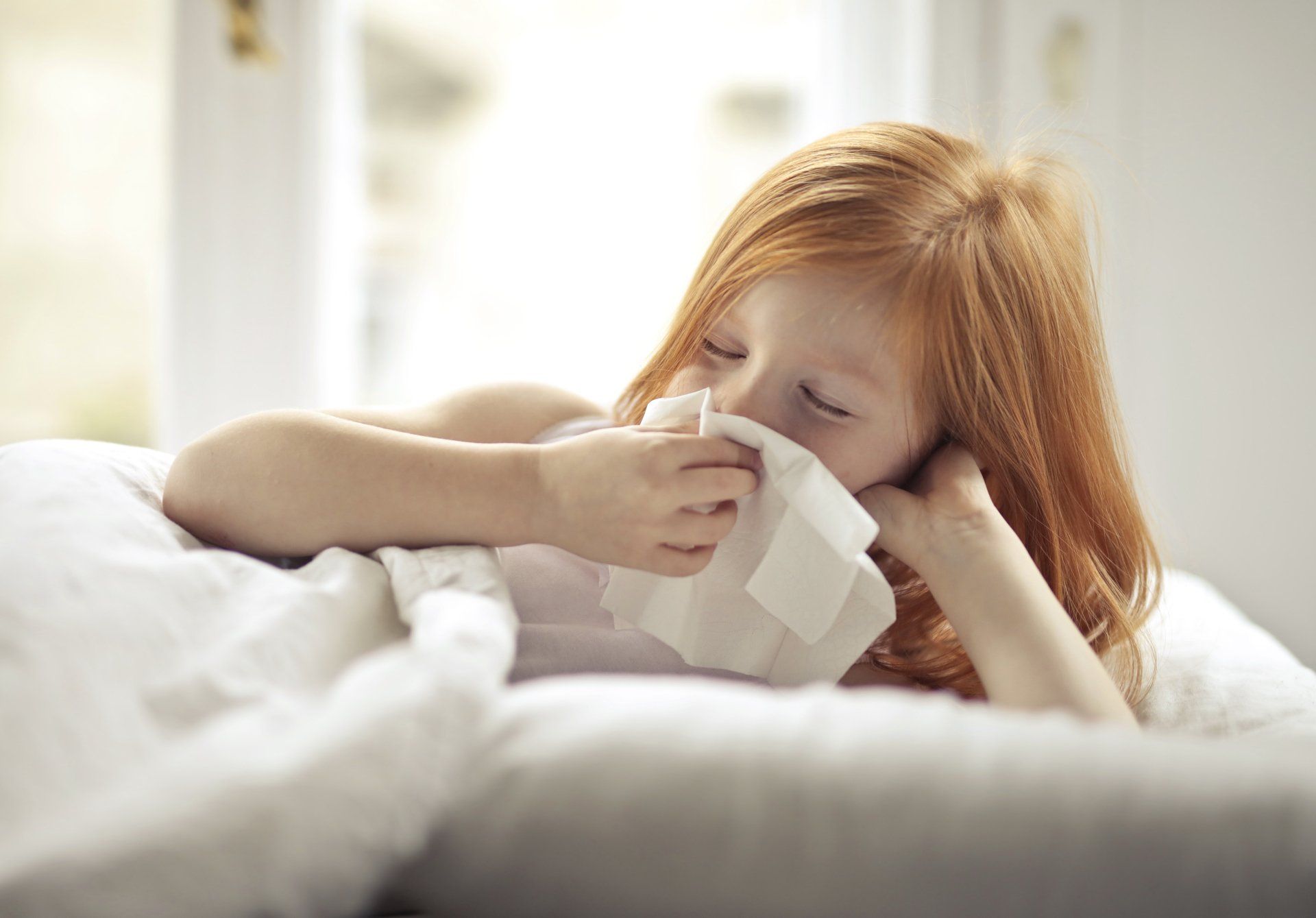Blog

Anxiety disorders are among the most common mental health conditions affecting children and adolescents today. According to the Canadian Mental Health Association, approximately 1 in 5 children in Canada experiences a mental health problem, with anxiety leading the list. In a high-paced world filled with academic demands, social pressures, and digital stimulation, it's no surprise that many young people are struggling with persistent worry and fear. However, the solution isn’t found in a one-size-fits-all approach. At Toronto Kids Health and Young Sprouts Therapy (a child and family therapy clinic in Thornhill), we believe that a collaborative model—rooted in the integration of naturopathic medicine and psychological counselling—offers a powerful, holistic pathway to healing. By addressing both the physiological and psychological roots of anxiety, we create individualized care plans that empower children and families to thrive. Why a Holistic Approach to Paediatric Anxiety Matters Anxiety doesn't manifest solely in the mind. It impacts the body, disrupts sleep, affects digestion, and can even weaken the immune system. Children may not always articulate their feelings directly; instead, their anxiety may show up as headaches, stomachaches, behavioural outbursts, sleep disturbances, or school refusal. The holistic model acknowledges this mind-body connection. It asks not just "what is wrong?" but "what is out of balance?" This opens the door to a dual approach that combines the emotional and behavioural support of psychological counselling with the physical and biochemical support of naturopathic care. The Role of Psychological Counselling in Paediatric Anxiety Young Sprouts Therapy specializes in child-focused psychological counselling using evidence-based modalities that are developmentally appropriate and rooted in compassion. Our therapists work with children, parents, and families to understand the root causes of anxiety and teach skills to manage it effectively. Evidence-Based Psychological Approaches: Cognitive Behavioural Therapy (CBT) CBT is one of the most well-researched and effective treatments for paediatric anxiety. It helps children recognize and reframe anxious thoughts, learn coping strategies, and practice gradual exposure to feared situations. Studies have shown that CBT can significantly reduce symptoms of generalized anxiety, social anxiety, and specific phobias in children (Kendall et al., 2005). Play Therapy Especially beneficial for younger children, play therapy uses toys, art, and storytelling as tools for communication. This modality helps therapists understand the child’s internal world and provides a safe space to express emotions, build emotional regulation, and develop coping mechanisms. Parent Coaching and Family Therapy Anxiety often affects the entire family system. Involving parents in the therapeutic process can improve outcomes by reinforcing positive behaviours, improving communication, and providing consistent support at home. Parental anxiety can also be addressed as it often correlates with child anxiety (Ginsburg et al., 2004). Mindfulness and Relaxation Training Techniques such as guided imagery, diaphragmatic breathing, and progressive muscle relaxation can be taught in sessions and practiced at home to reduce physiological symptoms of anxiety and improve emotional regulation. The Role of Naturopathic Medicine in Paediatric Anxiety At Toronto Kids Health Naturopathy , we take a functional, integrative approach to child health that complements psychological care. Our naturopathic doctors investigate nutritional, biochemical, and lifestyle factors that may contribute to anxiety while using safe, evidence-based natural therapies to support nervous system regulation. Evidence-Based Naturopathic Approaches: Nutritional Optimization Emerging evidence shows strong links between diet, gut health, and mental health. Deficiencies in key nutrients—such as magnesium, zinc, vitamin D, omega-3 fatty acids, and B vitamins—are associated with anxiety symptoms in children (Sowa-Kućma et al., 2018). We perform targeted testing and make individualized dietary recommendations to correct imbalances. Gut-Brain Axis Support The gut microbiome plays a significant role in mood regulation. Probiotic and prebiotic interventions may reduce anxiety symptoms by modulating gut flora and inflammation (Slykerman et al., 2017). We assess for gut dysbiosis and recommend interventions tailored to each child’s needs. Botanical Medicine Certain herbs, such as chamomile (Matricaria recutita), lemon balm (Melissa officinalis), and passionflower (Passiflora incarnata), have shown promise in managing anxiety in children and adolescents. These botanicals, when used judiciously and under the guidance of a trained ND, can support calming of the nervous system without the side effects associated with pharmaceuticals (Sarris et al., 2013). Homeopathy and Flower Essences While more controversial in the research literature, homeopathy and Bach Flower Remedies are often well-tolerated and can offer subtle yet effective emotional support, especially when tailored to the individual child’s emotional profile. Lifestyle Counselling and Sleep Hygiene Children with anxiety often have disrupted sleep. We offer strategies to support circadian rhythms, reduce screen time, and encourage physical activity—all of which have been shown to lower anxiety levels. Mind-Body Interventions Naturopathic care can include breath work, yoga for kids, and guided meditations. These practices support parasympathetic nervous system activation and improve resilience to stress.

Introduction Belly aches are a common woe for children, often causing distress for both the little ones and their parents. While over-the-counter medications are a go-to solution for many, there is a growing interest in natural remedies. Safe herbs offer gentle, effective relief and can be a soothing alternative for belly aches in kids. This blog post will guide you through the benefits of using herbs like chamomile, peppermint, and ginger, how to safely administer them, and additional tips for preventing tummy troubles. Understanding Belly Aches Common Causes of Belly Aches in Kids Belly aches in children can stem from various sources. It might be the digestion of certain foods, stress, or minor infections. Understanding the root cause is the first step to finding the right remedy. For instance, overeating, food allergies, or even anxiety about school can trigger stomach pains. By pinpointing the cause, parents can better tailor their approach to relief. Identifying Symptoms Recognizing the symptoms can help differentiate between simple belly aches and more serious conditions. Look for signs such as nausea, bloating, or recurrent abdominal pain. If fever or vomiting accompanies the belly ache, it might be time to consult a healthcare professional. Keeping a symptom diary can also help in identifying patterns and triggers. When to Seek Medical Help Although natural remedies can be highly effective, it's crucial to know when to seek medical assistance. Persistent pain, severe symptoms, or any signs of dehydration should prompt an immediate visit to the doctor. Always err on the side of caution and consult a healthcare professional if you are unsure about the severity of your child's condition.

Introduction Understanding Attention Deficit Hyperactivity Disorder (ADHD) can be challenging. But, as parents and health professionals know, managing the symptoms is even more daunting. While medications and therapies are often the first steps, diet plays a crucial role in managing ADHD symptoms as well. This blog post explores the types of foods to include and avoid in an ADHD diet, providing valuable insights to help improve cognitive function and mood stability. Foods to Include in an ADHD Diet Nutrient-Dense Foods for Cognitive Function Certain foods have been shown to support brain health and improve focus, making them excellent choices for individuals with ADHD. Nutrient-dense foods like leafy greens, whole grains, and lean proteins are essential for cognitive function. Omega-3 fatty acids, found in fish like salmon and flaxseeds, are particularly beneficial for brain health. Fruits and Vegetables Fruits and vegetables are packed with vitamins and minerals that support overall health. For individuals with ADHD, consuming a variety of colourful fruits and vegetables can help stabilize mood and improve focus. Blueberries, oranges, and spinach are excellent choices due to their high antioxidant content, which protects brain cells from damage. Lean Proteins Protein is crucial for brain function and neurotransmitter production. Including lean proteins like chicken, turkey, and legumes in the diet can help regulate blood sugar levels, reducing hyperactivity and impulsivity. Eggs are another great source of high-quality protein that can be easily incorporated into meals. Foods to Avoid or Limit for Those with ADHD Impact of Certain Foods on ADHD Symptoms While some foods can support brain health, others can exacerbate ADHD symptoms. Highly processed foods, artificial additives, and high-sugar items can lead to increased hyperactivity and impulsivity. It's essential to understand the impact of these foods to make informed dietary choices. Common Trigger Foods Processed snacks like chips and cookies often contain artificial colours, flavours, and preservatives that can worsen ADHD symptoms. Similarly, high-sugar items like candy and soda can cause blood sugar spikes, leading to increased hyperactivity. Reducing the intake of these trigger foods can help manage symptoms more effectively. Artificial Additives and Preservatives Many packaged foods contain artificial additives and preservatives that can negatively affect individuals with ADHD. These chemicals can interfere with brain function and exacerbate symptoms. Reading labels and choosing whole, unprocessed foods can help minimize exposure to these harmful substances. Food Sensitivities As a naturopathic doctor, I often encounter patients with ADHD who experience significant improvements through dietary modifications. Food sensitivities can play a crucial role in exacerbating ADHD symptoms, such as hyperactivity, inattentiveness, and impulsivity. Common culprits include artificial additives, dyes, gluten, dairy, and certain preservatives. By meticulously identifying and eliminating these trigger foods from the diet, we can help reduce the intensity of these symptoms. Emphasizing a holistic approach, I advocate for the consumption of natural and whole foods, rich in essential nutrients and free from harmful chemicals. This dietary shift not only supports overall health but also enhances concentration and reduces hyperactivity, offering a more balanced and effective strategy for managing ADHD. Click here for more information of food sensitivity testing . Meal Planning and Preparation Tips Practical Advice for Daily Meals Incorporating ADHD-friendly foods into daily meals doesn't have to be complicated. Planning balanced meals that include a variety of nutrient-dense foods can make a significant difference. Breakfast might include oatmeal topped with fresh berries and a side of scrambled eggs, while lunch could be a salad with grilled chicken and a variety of colourful vegetables. Strategies for Healthy Eating Habits Developing healthy eating habits is key for managing ADHD symptoms. Encouraging regular meal times and involving children in meal preparation can make healthy eating more enjoyable. Simple strategies like keeping cut-up fruits and vegetables ready for snacking can make it easier for children to choose healthy options. Making It Fun for Kids Engaging children in the process of planning and preparing meals can foster a positive attitude toward healthy eating. Creating fun shapes with fruits and vegetables or involving kids in cooking can make mealtime an exciting activity rather than a chore. Case Studies and Expert Insights Real-Life Examples Case Report: Dietary Intervention in a 14-Year-Old Boy with ADHD Patient Profile: Age: 14 years Gender: Male Diagnosis: Attention Deficit Hyperactivity Disorder (ADHD) at age 10 Initial Symptoms: The patient initially presented with classic symptoms of ADHD, including hyperactivity, impulsivity, and difficulties with concentration and attention. These symptoms were evident both at home and in his academic performance, resulting in considerable challenges in his daily life. Discovery of Food Sensitivities: At age 13 a comprehensive food sensitivity test was conducted. The test revealed significant sensitivities to both dairy and gluten. This discovery prompted a thorough discussion about potential dietary interventions aimed at alleviating ADHD symptoms. Dietary Changes Implemented: Following the test results, the patient and his family were advised to eliminate all sources of dairy and gluten from his diet. This involved switching to dairy-free alternatives and adopting a gluten-free diet. The family received support and guidance on how to maintain a balanced and nutritious diet that avoided these triggers while focusing on whole and natural foods rich in essential nutrients. Observations and Improvements: Within a few weeks of implementing these dietary changes, noticeable improvements were observed. The patient's hyperactivity levels decreased significantly, and he demonstrated better concentration and attention both at home and in school. His impulsivity also reduced, leading to more manageable behaviuor and improved interactions with peers and teachers. Role of Naturopathic Approach: The naturopathic approach played a crucial role in identifying the food sensitivities and guiding the dietary modifications. By focusing on natural and holistic methods, the approach not only targeted the root cause of the exacerbated ADHD symptoms but also contributed to the patient's overall well-being. The integration of a nutrient-rich diet free from harmful chemicals further supported his health and developmental needs. Overall Impact: The elimination of dairy and gluten from the patient's diet resulted in substantial relief from ADHD symptoms, significantly enhancing his quality of life. The patient experienced improved academic performance, better social interactions, and a noticeable reduction in ADHD-related challenges. This case underscores the potential benefits of personalized dietary interventions guided by naturopathic principles in managing ADHD. Input from Nutritionists and Pediatricians Expert insights from nutritionists and naturopathic doctors can provide valuable guidance for managing ADHD through diet. These health professionals might recommend specific foods or supplements to support brain health, and offer personalized advice based on individual needs. Collaborating with healthcare professionals ensures a comprehensive approach to managing ADHD. Conclusion In summary, diet plays a crucial role in managing ADHD symptoms. By including nutrient-dense foods that support cognitive function and mood stability while avoiding trigger foods that exacerbate symptoms, parents and mental health professionals can significantly improve the quality of life for individuals with ADHD. Encouraging healthy eating habits and involving children in meal preparation can make the process enjoyable and effective. For further reading or personalized advice, consider consulting with a healthcare professional who can guide you on this journey toward better health and well-being.

Introduction Epilepsy is one of the most common neurological disorders affecting children worldwide. For parents and medical professionals alike, finding effective treatments for refractory pediatric epilepsy can be an uphill battle. Recently, there has been growing interest in the use of cannabidiol (CBD) as a potential treatment option. This blog post will explore the latest research on CBD for pediatric epilepsy, compare it with traditional treatments like Keppra, and provide practical insights for parents and medical professionals considering this alternative approach. Understanding Pediatric Epilepsy Pediatric epilepsy is characterized by recurrent seizures that can disrupt a child's daily life. These seizures are caused by abnormal electrical activity in the brain. Traditional treatments often include antiepileptic drugs (AEDs), but these are not always effective for every child. In cases where seizures are resistant to conventional treatments, they are termed "refractory." The Rise of CBD as a Treatment Option Cannabidiol, or CBD, is a compound derived from the cannabis plant. Unlike THC, another well-known compound from the same plant, CBD does not produce a high. Instead, it has shown promise in treating various medical conditions, including epilepsy. Recent studies suggest that CBD may help reduce the frequency of seizures in children with refractory epilepsy. How CBD Works in the Brain CBD interacts with the body's endocannabinoid system, which plays a role in regulating neurological functions. It is believed that CBD helps modulate electrical activity in the brain, thereby reducing the likelihood of seizures. Research is ongoing, but early results are promising. Clinical Trials on CBD for Pediatric Epilepsy Several clinical trials have investigated the efficacy of CBD in treating pediatric epilepsy. One notable study involved administering high doses of CBD to children with Dravet syndrome, a severe form of epilepsy. The results showed a significant reduction in seizure frequency, providing hope for families dealing with this challenging condition. The research study conducted in collaboration with the Hospital for Sick Children (SickKids) in Toronto explored the use of cannabidiol (CBD) as a treatment for pediatric epilepsy. The study aimed to determine the effectiveness and safety of CBD in reducing seizure frequency and severity in children with drug-resistant epilepsy. Researchers administered controlled doses of CBD to the pediatric participants and monitored their seizure activity, overall health, and potential side effects over a specified period. The results indicated that CBD significantly reduced the number and intensity of seizures in many participants, with a favourable safety profile and manageable side effects. This pioneering research highlights the potential of CBD as a promising alternative treatment for children suffering from epilepsy, offering hope for better management of this challenging condition. Comparing CBD with Keppra Keppra (levetiracetam) is a commonly prescribed antiepileptic drug. While effective for many, it does have side effects such as irritability and mood changes. In comparison, CBD is generally well-tolerated with fewer reported side effects. However, more research is needed to establish long-term safety and efficacy. Efficacy Keppra (Levetiracetam): Efficacy in Seizure Control: Keppra is widely used and approved for treating various types of seizures, including partial-onset, myoclonic, and primary generalized tonic-clonic seizures in children and adults. Clinical trials have shown it to be effective in reducing seizure frequency. Time to Effect: It has a relatively quick onset of action, making it a preferred choice for acute management. High-Dose CBD: Efficacy in Seizure Control: High-dose CBD has shown significant promise in reducing seizure frequency and severity, particularly in drug-resistant epilepsy conditions such as Dravet syndrome and Lennox-Gastaut syndrome. Research, including studies conducted with the Hospital for Sick Children in Toronto, indicates substantial reductions in seizure frequency among pediatric patients. Specificity: CBD may be more effective for certain types of epilepsy that are resistant to conventional treatments. Safety Keppra: Safety Profile: Generally considered safe, but safety can vary depending on the individual. It is commonly used in both pediatric and adult populations. Monitoring: Routine monitoring of kidney function and blood counts is recommended because it can affect these parameters. High-Dose CBD: Safety Profile: Research suggests that high-dose CBD is generally well-tolerated in children with epilepsy. However, long-term safety data is still being gathered. Regulation and Standardization: As a newer treatment, the regulation and standardization of CBD products can vary, affecting consistency and safety. Side Effect Profile Keppra: Common Side Effects: Drowsiness, fatigue, dizziness, irritability, and behavioural changes such as aggression or mood swings are frequently reported. Severe Side Effects: In rare cases, it can cause severe allergic reactions, psychosis, or suicidal thoughts. High-Dose CBD: Common Side Effects: Diarrhea, reduced appetite, sleepiness, and fatigue are the most commonly reported side effects. Some studies have also noted increases in liver enzymes, necessitating regular liver function tests. Drug Interactions: CBD can interact with other medications metabolized by the liver, which requires careful management and monitoring. Practical Insights for Parents Parents considering CBD for their child's epilepsy should consult with a medical professional. Dosage and administration methods can vary, and it is crucial to ensure that the CBD product is high-quality and free from contaminants. Additionally, keep in mind that while CBD may offer benefits, it is not a cure-all and should be part of a comprehensive treatment plan. The Role of Medical Professionals Medical professionals play a critical role in guiding families through the decision-making process. It is important to stay informed about the latest research and to discuss potential benefits and risks with patients. Collaboration with neurologists and other specialists can provide a holistic approach to treatment. Legal and Regulatory Considerations The legal status of CBD varies by region and country. In some places, CBD is readily available, while in others, it may be restricted. Parents and medical professionals should be aware of local laws and regulations to ensure compliance. Community and Support Networks Joining support groups and online communities can provide valuable insights and emotional support for families dealing with pediatric epilepsy. Sharing experiences and learning from others who have tried CBD can be empowering. Future Directions in Research The field of CBD research is rapidly evolving. Ongoing studies are exploring optimal dosages, long-term effects, and the mechanisms by which CBD reduces seizures. Future research will likely provide more definitive answers and potentially broaden the use of CBD in pediatric epilepsy treatment. Addressing Common Misconceptions There are several misconceptions about CBD, particularly its association with recreational cannabis use. It is important to distinguish between the therapeutic use of CBD and other forms of cannabis. Educating the public can help reduce stigma and promote acceptance of CBD as a legitimate treatment option. Conclusion The potential of CBD as a treatment for pediatric epilepsy is a topic of great interest and hope. While more research is needed, the initial findings are encouraging. Parents and medical professionals should work together to explore all available options, including CBD, to provide the best possible care for children with epilepsy. For those interested in learning more, consider booking a consultation with a specialist in CBD treatments to discuss tailored options for your child's needs. For more information or to book an appointment click here

Understanding common rashes on kids is crucial for parents, paediatricians, and childcare providers. There's nothing more distressing than seeing a child uncomfortable or in pain due to a rash. This blog post aims to equip you with the knowledge to identify, manage, and prevent the most common rashes seen in children. Why It’s Important to Recognize Common Rashes on Kids Every parent has faced a moment when they notice a red patch or a series of bumps on their child's skin and wonder what it could be. Recognizing and understanding common rashes can help alleviate worries and ensure timely and appropriate care. Not all rashes are dangerous, but some require medical attention. Knowledge is your best defence in keeping your little ones healthy and happy. Overview of 5 Common Rashes Eczema Causes, Symptoms, and Management Eczema, also known as atopic dermatitis, is a chronic skin condition causing red, itchy, and inflamed patches. It's often triggered by environmental factors like allergens, irritants, and sometimes even food. Symptoms include dry, sensitive skin, intense itching, and sometimes oozing or crusting. Conventional management of eczema involves keeping the skin moisturized with hypoallergenic lotions and avoiding known triggers. Steroid creams prescribed by a paediatrician can help manage flare-ups, and antihistamines may be necessary to control itching. Bathing with lukewarm water and using mild soap can also reduce irritation. Naturopathic management of eczema focuses on holistic approaches that include dietary adjustments, identifying food sensitivities , lifestyle changes, and natural topical treatments. An anti-inflammatory diet rich in fresh fruits, vegetables, fatty fish, nuts, and seeds can reduce inflammation, while avoiding processed foods and known allergens may help manage flare-ups. Probiotics for gut health, essential fatty acids like omega-3s, and staying hydrated are key dietary components. N atural moisturizers like coconut oil, shea butter, and aloe vera gel can soothe and hydrate the skin. Herbal remedies such as calendula cream, chamomile, and licorice root extract, along with oatmeal baths, offer additional relief. Supplements like vitamin D, zinc, quercetin, and turmeric support overall skin health and reduce inflammation. Other therapies, including acupuncture, homeopathy, and hydrotherapy, may also be beneficial. Diaper Rash Prevention and Treatment Tips Diaper rash is a common issue for infants and toddlers, caused by prolonged exposure to wet or soiled diapers. Symptoms include red, inflamed skin in the diaper area, sometimes accompanied by sores or blisters. Preventing diaper rash involves changing diapers frequently and ensuring the diaper area is clean and dry. Using barrier creams containing zinc oxide can protect the skin from moisture. If a rash develops, allowing the child some diaper-free time can help the skin heal faster. In severe cases, a pediatrician may recommend a medicated ointment. Hand, Foot, and Mouth Disease Recognizing Symptoms and Care Hand, Foot, and Mouth Disease (HFMD) is a viral infection common in young children. It causes a rash on the hands and feet, along with sores in the mouth. Symptoms include fever, reduced appetite, sore throat, and red spots or blisters on the hands, feet, and mouth. Care for HFMD involves keeping the child comfortable and hydrated. Pain relievers like acetaminophen can help reduce fever and pain. Encouraging fluid intake is crucial, as mouth sores can make eating and drinking painful. Most cases resolve on their own within a week, but it's essential to seek medical advice if symptoms worsen or dehydration occurs. Heat Rash Causes, Symptoms, and Prevention Strategies Heat rash, or prickly heat, occurs when sweat ducts become blocked and swell, causing discomfort and itching. This rash often appears as tiny red bumps or blisters in areas where sweat accumulates, such as the neck, chest, and diaper area. Preventing heat rash involves keeping the child cool and dry. Dress your child in lightweight, breathable clothing and avoid overheating. If heat rash occurs, cool baths and keeping the affected area dry can help. Avoid using oily lotions that can block sweat ducts further. Allergic Reaction Rash Identifying Triggers and Treatment Allergic reaction rashes can result from exposure to allergens such as certain foods, medications, or plants like poison ivy. These rashes can appear as hives, characterized by itchy, raised welts, or as more extensive red patches. Identifying and avoiding the allergen is the best prevention strategy. Over-the-counter antihistamines can help relieve itching. In cases of severe allergic reactions, such as difficulty breathing or swelling, immediate medical attention is necessary. Identifying and Differentiating Rashes Recognizing the type of rash your child has can be challenging. Here are detailed descriptions and tips to differentiate between them: Eczema often appears in the creases of elbows and knees and may be accompanied by dry, thickened skin. Diaper Rash is localized to the diaper area and can have bright red patches or small bumps. Hand, Foot, and Mouth Disease rashes are distinct because they involve the hands, feet, and mouth, often with other symptoms like fever. Heat Rash appears as tiny, red spots or blisters in areas prone to sweating. Allergic Reaction Rash can vary but usually presents as hives or broad red patches and may occur suddenly after exposure to an allergen. Consulting visual aids online can also help in identifying rashes accurately. Always consider a healthcare provider's advice for proper diagnosis and treatment. Management and Home Care Taking care of rashes at home is crucial. Here are best practices: Eczema: Moisturize frequently, use prescribed creams, and avoid known triggers. Diaper Rash: Change diapers often, keep the area clean and dry, and use barrier creams. HFMD: Keep your child hydrated, use pain relievers, and maintain good hygiene. Heat Rash: Keep your child cool, dress them in breathable clothes, and avoid heavy lotions. Allergic Reaction Rash: Identify and avoid allergens, use antihistamines, and seek immediate medical care for severe reactions. Knowing when to seek medical advice is key. If a rash is accompanied by fever, swelling, or breathing difficulties, contact a Paediatrician or Naturopathic Doctor immediately. Preventing and Reducing the Risk of Rashes Prevention is always better than cure. Here's how you can reduce the risk of rashes: Maintain Good Hygiene: Regular baths and clean, dry skin can prevent many rashes. Dress Appropriately: Choose breathable, comfortable clothing to avoid heat rash and other irritations. Monitor Allergens: Be mindful of potential allergens in food, plants, and products. Stay Hydrated: Ensure your child drinks plenty of fluids, especially in hot weather. Implementing these practices can significantly reduce the occurrence of rashes and keep your child comfortable and happy. Recap and Next Steps We’ve covered the common rashes seen in children, their causes, symptoms, and treatments. Early identification and proper care are essential for managing these conditions. When in doubt, always seek professional medical advice. Rashes can be distressing for both children and caregivers, but with the right knowledge and approach, they can be effectively managed. Share this article with other parents and caregivers to spread awareness and support our community. If you have any questions or need further assistance, don't hesitate to reach out to our paediatric services . We're here to help you keep your children healthy and happy.

In today's health-conscious world, the terms "allergy," "intolerance," and "sensitivity" are often used interchangeably. However, these conditions are distinct from one another and understanding their differences is crucial for effective management. This post will explore the definitions, causes, symptoms, diagnosis, treatment, and long-term implications of allergies, intolerances, and sensitivities. Definitions and Distinguishing Characteristics Allergy An allergy is an immune system response to a foreign substance (allergen) that is typically harmless to most people. Common allergens include pollen, pet dander, and certain foods like peanuts. Intolerance An intolerance refers to difficulty digesting certain foods, which is not related to the immune system. A well-known example is lactose intolerance, where the body lacks the enzyme lactase necessary to digest lactose in dairy products. Sensitivity Sensitivity, on the other hand, is a term often used to describe both immune and non-immune-mediated adverse reactions to food or environmental factors. It can be caused by various mechanisms, including enzyme deficiencies, intestinal integrity issues or chemical sensitivities. Causes and Mechanisms Allergy Causes: Genetic predisposition Environmental factors Mechanisms: Involves an overactive immune response Production of IgE antibodies Intolerance Causes: Enzyme deficiencies Chemical reactions Mechanisms: Non-immune system related Example: Lack of lactase enzyme in lactose intolerance Sensitivity Causes: Varied and often unclear Mechanisms: Can involve multiple pathways Production of IgG antibodies Example: Sensitivity to food additives like sulfites Symptoms and Severity Allergy Symptoms: Hives, itching, swelling, anaphylaxis Severity: Can range from mild to life-threatening Intolerance Symptoms: Bloating, gas, diarrhea Severity: Generally less severe but can cause significant discomfort Sensitivity Symptoms: Headaches, fatigue, dermatitis, digestive issues Severity: Typically mild to moderate Diagnosis Process and Testing Methods Allergy Diagnosis: Skin prick tests, blood tests (IgE antibodies) Testing Methods: Skin prick test, RAST (Radioallergosorbent test) Intolerance Diagnosis: Elimination diets, breath tests Testing Methods: Hydrogen breath test for lactose intolerance Sensitivity Diagnosis: Elimination diets, patient history, blood test (IgG antibodies) Testing Methods: Food sensitivity panels, trial and error Treatment Options and Management Strategies Allergy Treatment: Antihistamines, epinephrine for severe reactions Management: Avoidance of allergens, desensitization therapy Intolerance Treatment: Enzyme supplements, dietary adjustments Management: Avoidance or reduction of triggering foods Sensitivity Treatment: Elimination Diet, pre and probiotic supplements Management: Identification and avoidance of triggers Potential Long-Term Health Implications Allergy Implications: Chronic conditions like asthma, eczema Risks: Anaphylaxis can be fatal if untreated Intolerance Implications: Nutritional deficiencies if not managed Risks: Generally lower risk compared to allergies Sensitivity Implications: Ongoing discomfort, impact on quality of life Risks: Typically not life-threatening Day-to-Day Impact on Individuals' Lives Allergy Impact: Requires constant vigilance to avoid allergens Can affect social interactions and lifestyle Intolerance Impact: Dietary adjustments needed Can limit food choices and convenience Sensitivity Impact: Trial and error to identify triggers Can lead to lifestyle changes Differences in Terms of Dietary Restrictions Allergy Dietary Restrictions: Strict avoidance of allergens Cross-contamination is a concern Intolerance Dietary Restrictions: Avoidance or reduction of specific foods Less strict than allergies Sensitivity Dietary Restrictions: Personalized based on individual triggers Can vary widely Prevalence in the Population Allergy Prevalence: Affects about 10% of the population Demographics: More common in children but can persist into adulthood Intolerance Prevalence: Lactose intolerance affects about 65% of the global population Demographics: Varies widely among different populations and ethnic groups Sensitivity Prevalence: Less well-documented, varies widely Demographics: Can affect anyone, often underreported Conclusion Understanding the differences between allergies, intolerances, and sensitivities is vital for managing these conditions effectively. While allergies require strict avoidance and can be life-threatening, intolerances and sensitivities often involve dietary adjustments and symptom management. Recommendations: If you’re unsure about your symptoms, it’s always best to seek professional medical advice . Understanding your condition is the first step towards better health and quality of life.

Summer days mean more time outdoors, and while sunscreen is crucial, did you know that certain foods can also help protect your kids from the sun's harmful rays? This blog post dives into the best foods that offer sun protection for kids, helping concerned parents add an extra layer of defence against UV rays. Read on to discover how you can turn snack time into a sun-shielding activity. The Power of Diet in Sun Protection You might be surprised to learn that what your kids eat can boost their skin's resilience to the sun. Nutrient-rich foods can strengthen skin cells, repair sun damage, and even reduce the risk of sunburn. A balanced diet packed with antioxidants and vitamins can be as essential as sunscreen in your sun protection strategy. Importance of Antioxidants Antioxidants are crucial for neutralizing free radicals produced by UV radiation. These free radicals can damage skin cells and lead to premature aging. Feeding your children antioxidant-rich foods can help their bodies fight off these harmful effects. Foods like berries, nuts, and dark leafy greens are excellent sources of antioxidants. Vitamin C for Skin Repair Vitamin C is a powerful antioxidant that helps repair and regenerate tissues. It also fights inflammation caused by sun exposure. Citrus fruits, strawberries, and bell peppers are rich in Vitamin C and can easily be incorporated into your child's diet. Adding these to their daily intake can help keep their skin healthy and resilient. The Role of Beta-Carotene Beta-carotene, found in colourful fruits and vegetables like carrots, sweet potatoes, and spinach, converts to vitamin A in the body. This nutrient is vital for maintaining skin health and protecting it from sun-related damage. Studies have shown that beta-carotene can even reduce the severity of sunburns. Omega-3 Fatty Acids for Protection Omega-3 fatty acids, commonly found in fatty fish, flaxseeds, and walnuts, have anti-inflammatory properties that can help mitigate the effects of sunburn. Including these foods in your child's diet can bolster their skin’s defences against UV radiation. Omega-3s not only protect but also nourish the skin, making it more resilient over time. Lycopene for Added Defence Lycopene, a powerful antioxidant found in tomatoes, watermelon, and pink grapefruit, can offer substantial protection against UV rays. Research has shown that lycopene can reduce skin redness and improve overall skin health. A tomato salad or a slice of watermelon could be your child’s new favourite sun-protective snack. Polyphenols from Green Tea Green tea is rich in polyphenols, compounds that have been shown to protect the skin from UV damage. Brewed green tea can be cooled and served as a refreshing drink, or you can incorporate green tea powder into smoothies for an extra health boost. This natural shield can make a significant difference in your child’s sun protection regimen. Vitamin E for Skin Health Vitamin E is another essential antioxidant that helps protect the skin from oxidative stress caused by UV exposure. Foods such as almonds, sunflower seeds, and avocados are excellent sources of Vitamin E. Adding these to your child’s diet can ensure their skin stays healthy and protected. The Benefits of Selenium Selenium is a mineral that supports antioxidant function in the body. It can be found in foods like Brazil nuts, eggs, and brown rice. Selenium helps protect the skin at the cellular level, making it a crucial component of a sun-protective diet. Just a few Brazil nuts a day can provide a sufficient dose of selenium. Hydration and Skin Health Staying hydrated is critical for maintaining healthy skin, especially under the harsh sun. Encourage your kids to drink plenty of water throughout the day and include hydrating foods like cucumbers, oranges, and watermelon in their diet. Proper hydration helps maintain skin elasticity and facilitates the healing process after sun exposure. Encouraging Healthy Eating Habits Introducing these sun-protective foods into your kids’ diet can be simple and fun. Get creative with meals and snacks to keep them excited about eating healthy. Smoothies, salads, and homemade trail mixes are great ways to incorporate a variety of these nutrients. Make it a family activity to explore new recipes and foods together. Click here for more articles on natural sun protection Recipes to Try To help you get started, here are a few simple recipes that include sun-protective ingredients: Berry and Spinach Smoothie: Blend together a cup of spinach, a handful of mixed berries, a banana, and a splash of orange juice. This smoothie is packed with antioxidants and vitamins. Tomato and Avocado Salad: Combine chopped tomatoes, diced avocado, and a sprinkle of sunflower seeds with a drizzle of olive oil and lemon juice. This salad is rich in lycopene and Vitamin E. Homemade Trail Mix: Mix together almonds, walnuts, dried strawberries, and a few pieces of dark chocolate. This snack provides a variety of nutrients that support skin health. Conclusion Incorporating these sun-protective foods into your child’s diet is a delicious and natural way to bolster their defence against harmful UV rays. While sunscreen and protective clothing are essential, a diet rich in antioxidants, vitamins, and minerals can provide additional support. By making small changes to their eating habits, you can help ensure their skin remains healthy and resilient. Ready to take your family’s sun protection to the next level? Explore our range of delicious, nutrient-packed recipes designed to keep your kids happy, healthy, and sun-safe.

Introduction Herbal teas have seen a surge in popularity over recent years, not only among adults but also for children. Parents are increasingly looking for natural and healthy beverage options for their kids, and herbal teas often come up as a great alternative. But when it comes to our little ones, not all herbal teas are created equal. Understanding which herbal teas are safe for children is crucial for their health and well-being. In this article, we'll explore what makes a herbal tea kid-friendly. We'll also provide a list of safe herbal teas, offer recommendations on portion sizes and precautions, and share creative ways to make herbal tea a fun experience for your children. By the end, you'll have a comprehensive guide to ensure your child enjoys this healthy beverage safely. What Makes a Herbal Tea Kid-Friendly? Criteria for Safety When choosing herbal teas for kids, safety is the top priority. The criteria for a kid-friendly herbal tea include: Caffeine-Free: Herbal teas should be free from caffeine, as it can affect children's sleep patterns and overall health. Non-Allergenic: Ensure the herbal tea does not contain ingredients that may trigger allergies. Mild Medicinal Properties: Some herbs have strong medicinal properties that may not be suitable for children. Caffeine Content Caffeine is a stimulant that can have adverse effects on children, including disrupted sleep and increased anxiety. Therefore, it's essential to choose herbal teas that are naturally caffeine-free, such as chamomile and peppermint. Potential Allergens Before introducing any herbal tea, check the ingredients for potential allergens. Common allergens in herbal teas include certain flowers and herbs. Always read the label and consult with a healthcare provider if your child has known allergies. For more on allergies and sensitivities Click Here Medicinal Properties Herbs have been used for medicinal purposes for centuries, but not all are suitable for children. Stick to herbs known for their mild effects and avoid those with potent medicinal properties unless advised by a healthcare professional. Safe Herbal Teas for Kids List of Safe Herbal Teas Here are some herbal teas generally considered safe for children, along with their flavours and potential health benefits: Chamomile Flavour: Mild and slightly sweet Benefits: Calming effects, aids digestion, and helps with sleep. Peppermint Flavour: Refreshing and minty Benefits: Helps with digestion, relieves headaches, and freshens breath. Rooibos Flavour: Rich and slightly nutty Benefits: High in antioxidants, supports immune health, and is caffeine-free. Lemon Balm Flavour: Mildly lemony and sweet Benefits: Calming effects, supports digestive health, and helps with sleep. Ginger Flavour: Spicy and warming Benefits: Aids digestion, soothes nausea, and supports immune health. Chamomile Tea Chamomile is widely recognized for its calming properties, making it an excellent choice for bedtime. Its mild flavour is generally well-received by children and can help with digestion and sleep. Peppermint Tea Peppermint tea is refreshing and can aid in digestion. It's a great option for children who enjoy a minty flavour. Additionally, peppermint can help relieve headaches and freshen breath. Rooibos Tea Rooibos tea is packed with antioxidants and is naturally caffeine-free. Its rich, slightly nutty flavour makes it a favourite among kids. Rooibos supports immune health, making it a beneficial choice for children. Precautions and Recommendations Introducing Herbal Teas to Kids When introducing herbal teas to your child, start with small portions to see how they react. Monitor for any adverse effects, such as allergic reactions or digestive issues. Portion Sizes and Frequency Begin with small amounts, such as half a cup, and gradually increase if your child enjoys the tea and shows no adverse reactions. It’s best to limit herbal tea to one cup per day to ensure it complements a balanced diet without over-reliance. When to Avoid Certain Herbal Teas Not all herbal teas are suitable for children. Avoid teas with strong medicinal properties or those known to be unsafe for young kids. Always consult a healthcare professional before introducing new herbs, especially if your child has underlying health conditions. Making Herbal Tea Fun for Kids Creative Ideas Making herbal tea fun can encourage your child to enjoy this healthy beverage. Here are some creative ideas: Tea Parties: Host a mini tea party with your child’s favourite toys. Flavour Experiments: Mix different herbal teas to create unique flavours. Ice Pops: Freeze herbal tea into ice pops for a refreshing treat. Kid-Friendly Recipes Here are some simple and delicious herbal tea recipes that kids will love: Chamomile Apple Tea: Brew chamomile tea, add a splash of apple juice, and serve warm or cold. Minty Lemonade: Brew peppermint tea, mix with lemonade, and add ice cubes for a refreshing drink. Rooibos Vanilla Smoothie: Blend brewed rooibos tea with vanilla yogurt and a banana for a creamy treat. Tasting Notes Included To make the experience educational, include tasting notes with each tea. Describe the flavours and encourage your child to share what they taste. This can be a fun way to develop their palate and understanding of different herbs. Conclusion Herbal teas can be a wonderful addition to your child's diet, offering various health benefits and delightful flavours. By choosing safe, caffeine-free, and non-allergenic options like chamomile, peppermint, and rooibos, you can introduce your child to the world of herbal teas confidently. Remember to start with small portions, monitor for any adverse reactions, and consult with a healthcare professional when in doubt. Making herbal tea fun and engaging can turn it into a cherished family ritual. Explore the world of herbal teas with your child and enjoy the numerous benefits they bring. Share this post with other parents and tea lovers to spread the love for safe and delicious herbal teas for kids. Happy sipping!

Allergic reactions can be a daunting experience, triggering everything from mild discomfort to life-threatening situations. Whether you're a health-conscious individual, a parent or caregiver, an allergy sufferer, or a medical professional, understanding the full spectrum of treatments available can be empowering. This blog post will explore both medical and naturopathic treatments for allergic reactions, offering a comprehensive look at how you can manage and potentially prevent these occurrences. Read on to discover practical tips, effective strategies, and a balanced approach to allergy management. Introduction to Allergic Reactions Allergic reactions occur when the immune system overreacts to a substance that is typically harmless, such as pollen, dust mites, or certain foods. This overreaction can manifest in various forms, from hives and itching to more severe symptoms like difficulty breathing and anaphylaxis. Allergies are increasingly common, affecting millions of people worldwide and impacting their quality of life. Understanding what triggers allergic reactions and how to manage them is crucial for anyone looking to lead a healthier, more comfortable life. What Causes Allergic Reactions? Allergic reactions are triggered by allergens, substances that prompt an immune response. Common allergens include pollen, pet dander, certain foods, insect stings, and medications. When exposed to an allergen, the immune system releases chemicals like histamines that cause symptoms such as sneezing, itching, and swelling. In severe cases, this reaction can lead to anaphylaxis, a life-threatening condition requiring immediate medical attention. Symptoms of Allergic Reactions The symptoms of allergic reactions can vary widely depending on the type of allergen and the individual's sensitivity. Common symptoms include: Sneezing and runny nose Itchy eyes and throat Skin rashes or hives Swelling of the lips, tongue, or face Difficulty breathing or wheezing Why Understanding Allergies is Important Understanding the underlying causes and symptoms of allergic reactions is the first step toward effective management. By identifying triggers and recognizing early signs, individuals can take proactive measures to minimize exposure and seek appropriate treatment promptly. This knowledge is particularly important for parents and caregivers who need to ensure the safety and well-being of children with allergies. Medical Management of Allergic Reactions Modern medicine offers various treatments for managing allergic reactions, ranging from over-the-counter antihistamines to emergency interventions like epinephrine injections. These treatments aim to alleviate symptoms, reduce inflammation, and prevent severe reactions. Here, we will explore some of the most common medical approaches to allergy management. Overview of Conventional Allergy Treatments Conventional allergy treatments typically involve medications designed to counteract the immune response triggered by allergens. Over-the-counter antihistamines, such as cetirizine and loratadine, are commonly used to relieve symptoms like sneezing, itching, and runny nose. Decongestants can help reduce nasal congestion, while corticosteroids are prescribed for more severe cases to reduce inflammation. The Role of Epinephrine in Anaphylaxis Epinephrine, also known as adrenaline, is the first-line treatment for anaphylaxis, a severe and potentially life-threatening allergic reaction. Administered via an auto-injector (commonly known as an EpiPen), epinephrine works quickly to constrict blood vessels, relax airway muscles, and reduce swelling. It is crucial for individuals with severe allergies to carry an epinephrine auto-injector and know how to use it in emergencies. Common Medications Used for Allergic Reactions In addition to antihistamines and epinephrine, other medications commonly used to treat allergic reactions include: Leukotriene inhibitors, which block chemicals involved in the allergic response Mast cell stabilizers, which prevent the release of histamine and other inflammatory substances Immunotherapy, which involves gradually exposing the individual to increasing amounts of the allergen to build tolerance These medications can be prescribed by a healthcare professional based on the severity and type of allergy, providing tailored treatment options for individuals. Naturopathic Approaches to Allergy Management While conventional medicine focuses on symptom relief, naturopathic approaches aim to address the root causes of allergies and support overall health. Naturopathy emphasizes natural remedies, dietary changes, and lifestyle modifications to reduce the likelihood of allergic reactions. Here, we will explore some effective naturopathic strategies for managing allergies. Dietary Changes and Supplements Diet plays a significant role in managing allergies. Certain foods can either exacerbate or alleviate allergy symptoms. For instance, reducing the intake of dairy, gluten, and processed foods can minimize inflammation and support immune function. Incorporating anti-inflammatory foods like turmeric, ginger, and omega-3 fatty acids can also help reduce symptoms. Supplements such as quercetin, vitamin C, and probiotics have been shown to support immune health and reduce allergic reactions. Quercetin, a natural antihistamine found in fruits and vegetables, can help stabilize mast cells and reduce histamine release. Vitamin C, a powerful antioxidant, helps boost the immune system and reduce inflammation. Probiotics, beneficial bacteria found in fermented foods and supplements, can improve gut health and modulate the immune response. Herbal Remedies and Their Efficacy Herbal remedies have been used for centuries to treat various ailments, including allergies. Some effective herbs for allergy management include: Butterbur, which has been shown to reduce symptoms of hay fever and allergic rhinitis Stinging nettle, known for its anti-inflammatory properties and ability to reduce histamine levels Elderberry, which supports immune function and reduces inflammation These herbs can be taken as teas, tinctures, or supplements. However, it is essential to consult with a healthcare professional before starting any herbal regimen to ensure safety and efficacy. The Importance of Environmental Changes Environmental factors play a crucial role in triggering allergic reactions. Making changes to your living environment can significantly reduce exposure to allergens and improve overall health. Some practical steps include: Using air purifiers to remove allergens like pollen, dust mites, and pet dander from the air Keeping windows closed during high pollen seasons and using HEPA filters in air conditioning systems Regularly washing bedding and vacuuming carpets to reduce dust mite populations By creating a cleaner and allergen-free environment, individuals can minimize the risk of allergic reactions and improve their quality of life. For more information of food sensitivity testing Click Here Integrative Strategies for Allergy Sufferers Combining medical and naturopathic treatments can offer a more comprehensive approach to managing allergies. Integrative care focuses on addressing symptoms while promoting overall health and well-being. Here, we will explore the benefits and challenges of integrative strategies for allergy management. Combining Medical and Naturopathic Treatments Integrative care involves using both conventional and naturopathic treatments to achieve optimal results. For example, an individual might take antihistamines to manage immediate symptoms while also incorporating dietary changes and supplements to support long-term health. This approach allows for a more personalized treatment plan that addresses both symptoms and underlying causes. The Benefits and Challenges of Integrative Care The benefits of integrative care include a more holistic approach to health, improved symptom management, and a greater focus on prevention. However, challenges may arise, such as coordinating care between different healthcare providers and ensuring that treatments do not interact negatively. Open communication and collaboration between medical professionals and naturopathic practitioners are essential for successful integrative care. Real-Life Examples of Integrative Strategies Many individuals have found success with integrative strategies for managing allergies. For instance, someone with seasonal allergies might use a combination of antihistamines, herbal remedies, and lifestyle changes to reduce symptoms and improve overall health. By addressing both immediate concerns and long-term wellness, integrative care offers a balanced and comprehensive approach to allergy management. Tips for Preventing Allergic Reactions Preventing allergic reactions involves identifying triggers, creating a management plan, and staying informed. Here, we will provide practical tips to help individuals minimize their exposure to allergens and reduce the likelihood of reactions. Identifying Triggers The first step in preventing allergic reactions is identifying specific triggers. Keeping a symptom diary can help pinpoint patterns and identify potential allergens. Allergy testing, conducted by a healthcare professional, can also provide valuable insights into specific triggers and inform a personalized management plan. Creating an Allergy Management Plan An effective allergy management plan includes strategies for avoiding allergens, recognizing early symptoms, and knowing when to seek medical help. Key components of a management plan may include: Avoiding known allergens by reading labels, asking about ingredients, and making informed choices Carrying essential medications, such as antihistamines and an epinephrine auto-injector, at all times Educating family members, friends, and caregivers about the individual's allergies and emergency procedures Having a clear plan in place can help individuals feel more confident and prepared to manage their allergies. Conclusion Allergic reactions can be challenging to manage, but with the right knowledge and strategies, individuals can take control of their health and lead a more comfortable life. By understanding the basics of allergies, exploring both medical and naturopathic treatments, and adopting integrative strategies, individuals can find effective ways to manage and prevent allergic reactions. The future of allergy treatment lies in a holistic and personalized approach that combines the best of both worlds. By staying informed, making thoughtful choices, and seeking support from healthcare professionals, allergy sufferers can empower themselves with knowledge and options for better health. Discover more about managing allergies and explore additional resources by visiting our website. Together, we can create a healthier, allergy-free future.
